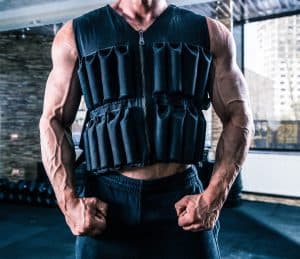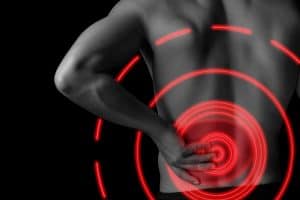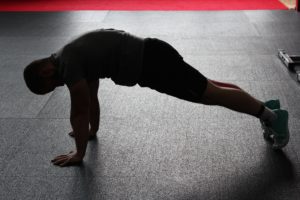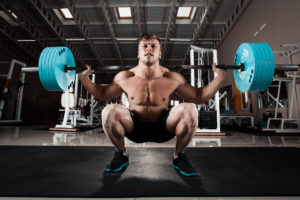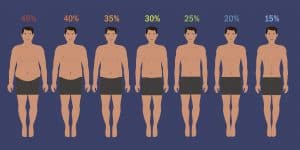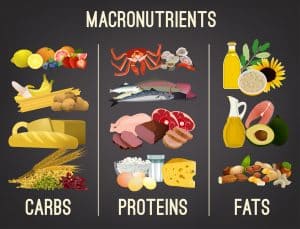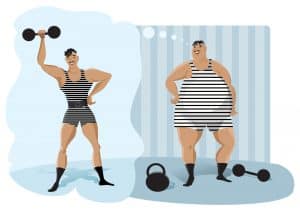I initially began my muscle and fitness route because I was overweight—and, as we know, that’s not exactly great for your health (although, to be honest, I only cared about how I looked more).
Yet, despite following a crazy diet and workout plans—I didn’t seem to be shedding the pounds. There had to be a reason—luckily, I found it.
This article explains that knowing how and why to measure your body fat percentage is essential.
What Is the Body Fat Percentage?
It may sound obvious—but let me make it clear. Body fat percentage is a measure of how much of your entire body mass is formed from fat.
That’s it.
So, if you’re an average guy weighing 190 pounds of which 19 pounds is fat—your body fat percentage is 10 percent (19/190 x 100).
On its own—that number means very little. However, when you understand the factors behind the percentage—it becomes vitally important.
Why Is it Important to Measure Your Body Fat Percentage?
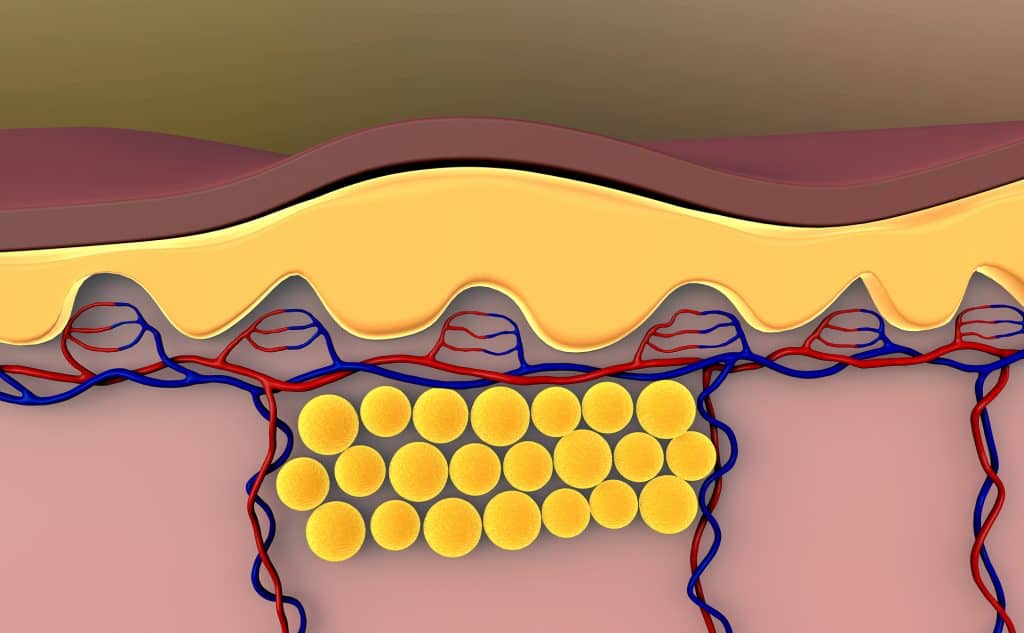
Let me start by dispelling a myth.
Often, newbies hit the gym and begin to work out hard in the expectation of losing their excess baggage.
After a couple of weeks, they check the scales and discover their weight remains unaltered—despite their mammoth efforts.
Hence, they consider the whole escapade pointless, and even cancel their gym membership, and console themselves with some therapeutic donuts and soda.
Here’s the key—losing fat doesn’t always equate to losing weight.
In the above example, as long as the diet and training were consistent, chances are some fat has dropped. The hard work has burned off excess fat mass, but been replaced by increased some muscle mass.
They’re fitter and healthier—but retained the same weight.
Many people starting on a pound-shedding program concentrate too heavily on BMI (body mass index). Yet using this as a guide to ideal weight and health can be incredibly limited.
The BMI simply takes into account an individual’s height and mass, not what that mass consists of (fat, muscle, bones, organs, water, etc.). Research indicates it’s an incredibly poor way to measure your body fat percentage.
Make no mistake—fat is important. You need it.
It’s responsible for producing energy, processing vitamins, providing insulation, protecting the organs, and promoting a healthy immune system.
Yet, like most things in life, too much of a good thing is bad for you.
Studies have indicated that people with a high body fat percentage have a much higher mortality rate. Furthermore, even if it doesn’t kill you, excess fat can lead to high blood pressure, diabetes, and cardiovascular disease.
In all these cases, the research indicates that your body fat percentage is a better indicator than BMI as a measure of health.
Hence, knowing your body fat percentage is essential for optimum wellbeing.
What’s a Good Amount of Body Fat to Have?
According to the NIH (National Health Institute) and WHO (World Health Organization) guidelines—healthy body fat percentages for men and women are as follows:
Body Fat by Age:
Age (years)
Female body fat%
Male body fat %
20 - 39
21 - 33%
8 - 20%
40 - 59
21 - 34%
11 - 21%
60 - 65
24 - 36%
13 - 25%
Professional bodybuilders and athletes, as pictured below, carry much lower body fat than indicated in the table above. However, this is essential for the sports in which they participate—it isn’t a measure of them being extremely healthy.
Body Fat by Category:
Category
Female body fat%
Male body fat%
Essential fat
10 - 13%
2 - 5%
Athletes
14 - 20%
6 - 13%
Fitness
21 - 24%
14 - 17%
Average
25 - 31%
18 - 25%
Obese
> 31%
> 25%
The image show around 12-14 percent fat in girls and 6-8 percent in guys. By all means, if this is your target, work towards it! However, these extremes aren’t essential for achieving the benefits of a healthy body fat percentage.
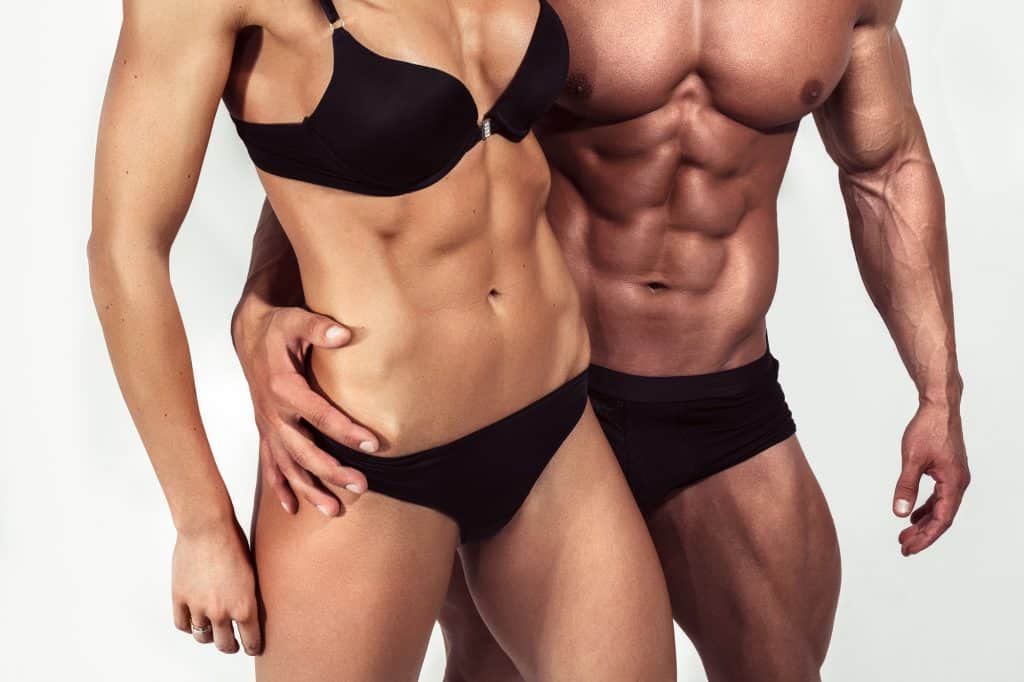
In fact, Dorian Yates (6-time Mr. Olympia from 1993 to 1999) had his body fat dropped to about 3% prior to his 93 competition! Insane!
If you are bulking, I recommend you don’t exceed 20% body fat. And if you are cutting, you could aim for a low double digit or, if you’re prepping for a contest, a single digit body fat percentage.
How to Measure Your Body Fat Percentage: The 7 most effective methods
Measuring your body fat percentage is the first step towards achieving a healthy weight. I’ve put together below seven alternative ways to measure your body fat percentage.
Some are very affordable and easy—others do require a little technology. While price and accuracy differ somewhat—they’re all positive steps in promoting improved health.
1
Body Calipers
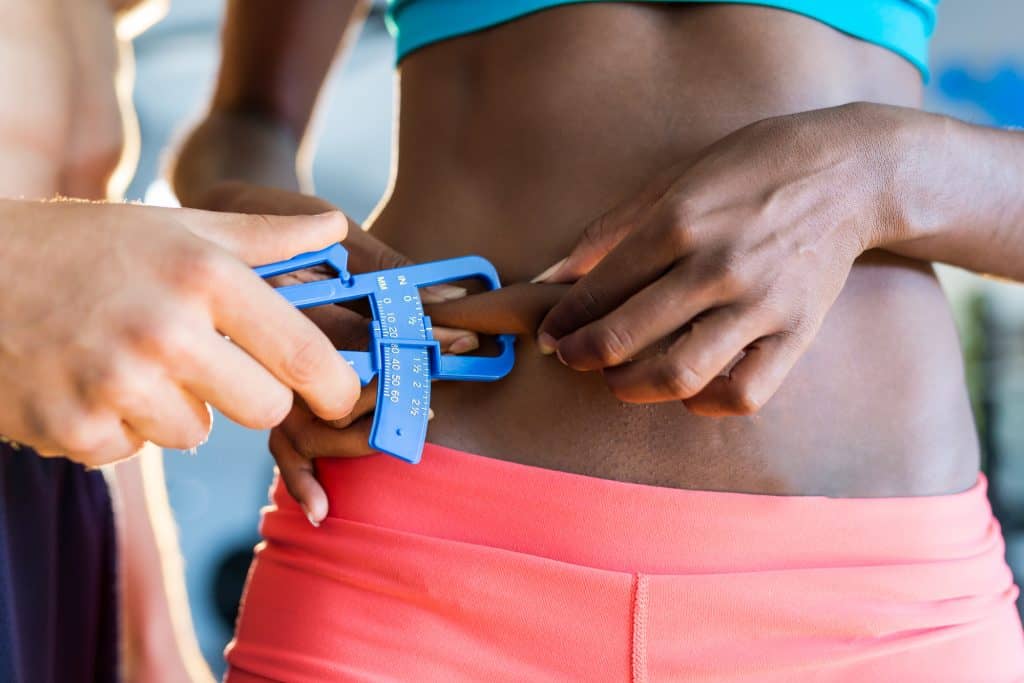
Probably the simplest and most traditional way to measure your body fat percentage. It’s not known exactly when this method originally began. However, scientific papers exist from over 60 years ago using this technique.
The process is easy.
Depending on the method used, usually, three or seven separate measurements are taken of the body.
This is done by “pinching” fat between the caliper arms—effectively “measuring” the fat. Calibration markings on the device indicate a figure—and these numbers are then checked against a chart to calculate body fat percentage.
These instruments are relatively inexpensive, easy to obtain, suitable for beginners, and can be used within the confines of your home.
However, there are some downsides. While they may indicate week-on-week how your fat-dropping progress is going—as an accurate method of ascertaining exact body fat percentage, it’s somewhat flawed.
Some research indicates that they can underestimate by as much as 21-45 percent (of your final fat figure).
If you’re still not completely clear how this works, here’s a handy video showing the process.
2
Body Measurement
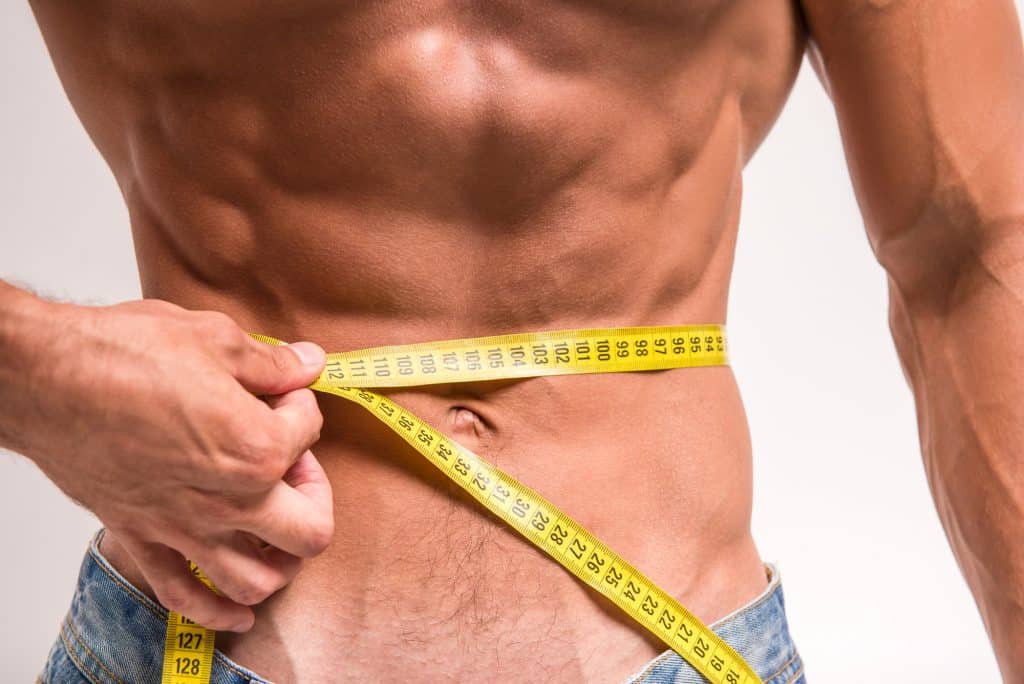
A study from 2013 indicated that the shape of the body, specifically its “roundness”, was a good indicator of body fat.
It’s another simple technique which requires nothing more than a tape measure and calculator (and possibly a friend to make the process easier).
There are numerous particular methods for fat measurement—however, the most widely used is that developed by the US Navy. It involves a formula which requires measuring the circumference of the abdomen and neck (plus hips for women) and your height.
For the mathematically minded, here are the two equations (all measurements are in inches):
Males:
Body fat % = 86.010 x log10(abdomen – neck) – 70.041 x log10(height) + 36.76
Females:
Body fat %= 163.205 x log10(waist + hip – neck) – 97.684 x log10(height) – 36.76
However, if numbers really aren’t your thing—here’s a convenient calculator to do all the hard work for you.
The accuracy of this method is debatable. Generally, it’s a good guide. But for people whose bodies fit outside the norm, i.e. different to those on whom the formula was originally based—it’s somewhat flawed.
3
BIA (Bioelectrical Impedance Analysis)
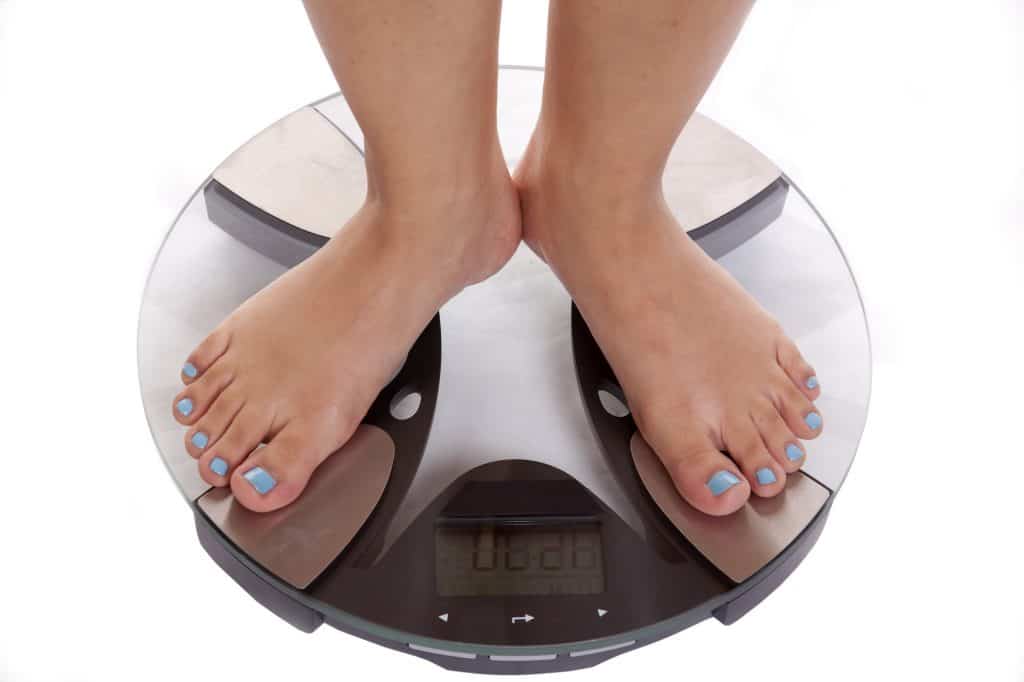
A way to measure your body fat percentage using electricity.
Here’s the science behind it.
Electrical currents are conducted through muscles with less resistance than that of fat—due to the higher levels of water they contain. BIA machines send an electrical pulse into the body and measure how that signal reacts.
Theoretically, indicating the amount of body fat.
The machines to do this can be extremely advanced, with a whole gamut of capacitors and electrodes. The simplest versions look the same as your typical bathroom scales and send a (pain-free and unnoticed) current through the soles of your feet.
Some gyms and health centers have more advanced machines—whereas the scales are affordable and available for the home.
While a fairly accurate measure of your body fat percentage—results can be misleading. Carrying a lot of body water or having high levels of electrolytes can skew the numbers.
Furthermore, studies have shown different BIA machines produce disparate results on the same subjects.
4
Hydrostatic Weighing
Also known as hydrodensitometry, the water displacement method, or underwater weighing. It’s simple—and extremely accurate. What’s more, it has a principle dating back over 2000 years.
Archimedes, the Greek mathematician, came up with a principle that when an object is placed in water—the weight of the water displaced equals that of the object.
Think of it like this.
Place an empty water bottle into a bowl of water. The bottle will float and the water level will rise only slightly. Fill that bottle with sand and repeat—the bottle will sink and the water level will rise much more.
In either case—the water level indicates the weight.
For calculating your body fat percentage this is important—fat floats yet muscle sinks.
A person is first weighed on dry land, and then underwater (usually sat on a “swing”). Using specific calculations, the differences are then used to determine, very accurately, your body fat percentage.
There are, however, quite a few downsides. Firstly, this process requires a lot of equipment—although many universities, specialized health centers, and fitness studios do offer the facility.
Secondly, it requires you to be perfectly comfortable breathing out and holding your breath while submerged under water.
If you want to check out someone undergoing this aquatic process, here’s a useful video from the University of Utah.
5
The Bod Pod
Technically known as Air Displacement Plethysmography (ADP), the Bod Pod works on a similar principle to the hydrostatic method. However, in this case, it’s not the water that’s displaced, but air.
If, like me, you’re a fan of sci-fi movies—this machine looks familiar.
It strongly resembles the “pods” that intergalactic explorers use to enter some kind of “cryosleep”—for incredibly long space travels. Many have the typical window and ambient lighting to boot.
In simple terms, you enter the pod and the door is sealed tight (keeping the air volume at a constant). The difference is that air volume is measured and compared to a measurement of an empty pod. Boffins (or computers) then do some complicated equations and your body fat percentage is calculated.
It’s an incredibly accurate method, takes only around five minutes, and doesn’t involve holding your breath underwater.
On the downside, it does mean seeking out a specialized center that offers the service and can be a little costly. There are some indications it’s not infallible—with body heat and moisture affecting results—but not to a significant degree.
I know you’re itching to look at someone locked in an air-tight container—so here’s a video.
6
DEXA (DXA)
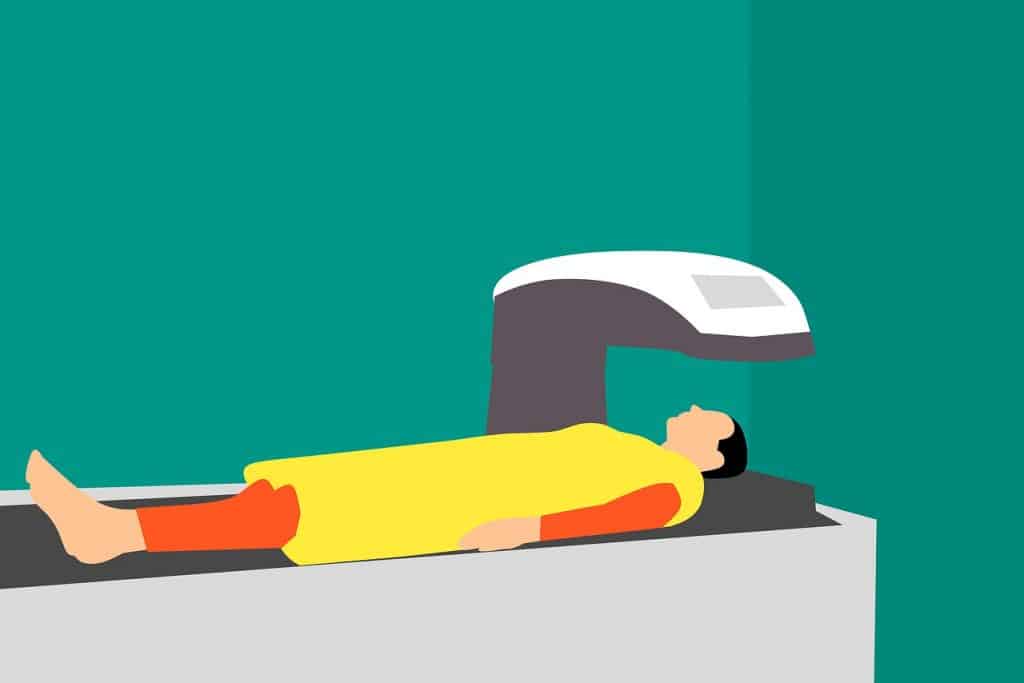
Dual Energy X-ray Absorptiometry, or more simply DEXA, uses twin-photon (hence “dual energy”) beams to calculate fat mass.
Process-wise, it’s very much like having any general X-ray—apart from this covers your entire body and not just your broken arm.
You lay down on an X-ray bed while the machine passes over you firing the dual energy beams at your body. The process lasts for around ten to fifteen minutes.
Normally, the machine is actually used to measure bone mineral density (at which it’s extremely accurate). However, from the scans produced, a “fat silhouette” is created, from which calculations of fat content can be made.
While there are some suggestions that it’s not as precise as the Bod Pod or water displacement method—research indicates it’s still a very reliable process to measure your body fat percentage.
However, due to the regulations involved in dealing with radiation—it’s unusual to see DEXA machines outside of a clinical environment.
The good news is, despite bombarding your body with X-rays—it’s a completely safe process. Studies show that the amount of radiation hitting the body is the same as you would experience vacationing in France.
7
The 4 Part Multi-Compartment Model
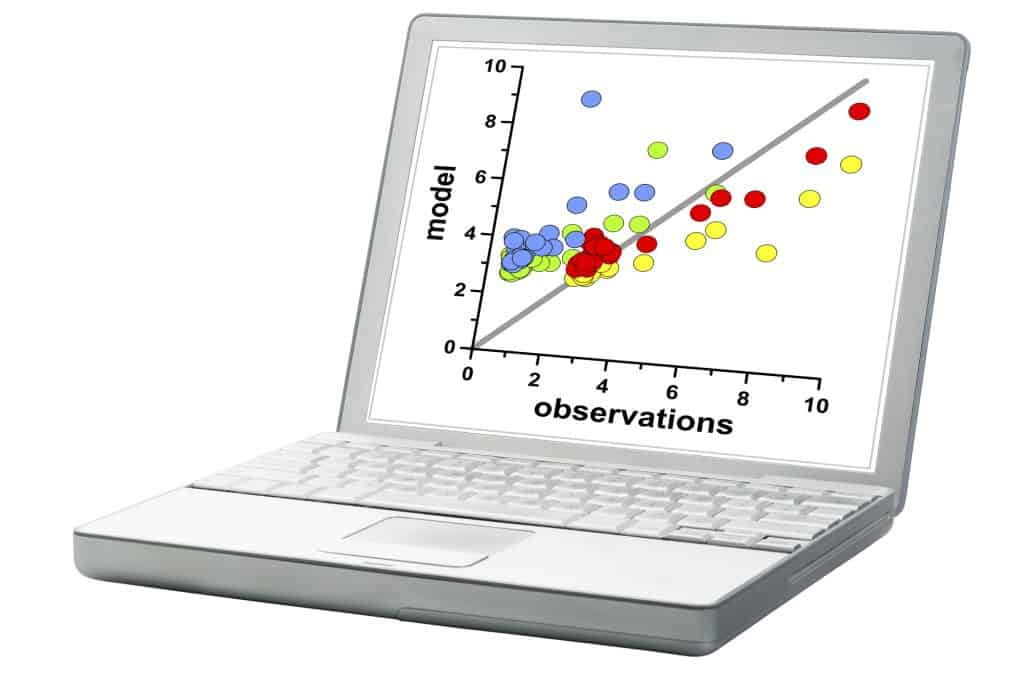
If getting an error of one to two percent of your body fat percentage is still too inaccurate—there’s one final process that’s the ultimate gold standard.
As suggested by the name, this method segments the body into four parts (theoretically, not literally). That is, it calculates bone density, entire physiological mass, water content, and body volume.
This is done by incorporating some of the techniques already discussed—using the best method for each component (for example, DEXA for bones, BIA for water, and the Bod Pod for volume).
Once completed (with some calculations) the most accurate body fat percentage figure possible is obtained.
However, don’t rock up at your local gym and ask where you can find the 4 Part Multi-Compartment Model machines. Unless you want to look like a twit.
It requires a medical facility with all the aforementioned instruments and someone able to combine and assess the results. And, it will not be as cheap as a pair of scales.
The Takeaway
Knowing your body fat percentage enables you to:
- Track your fitness goal progress.
- Ensure you’re doing the maximum to prevent disease.
- Understand that weight isn’t all about fat—water and muscle play their part.
- Keep you positive about becoming fit—weight can remain the same but the fat percentage falls.
As seen in this article, measuring your body fat percentage isn’t difficult at all. Many methods—such as calipers, body measurement, or BIA scales are affordable and can be completed in a matter of minutes.
Others, such as water displacement and bod pods are more costly—yet are still easily available and offer a highly accurate method.
What is of most importance is that you select the method that meets your financial and accuracy requirements—and stick to it.
Knowing your body fat percentage is the easiest way to a safe and healthy life.


